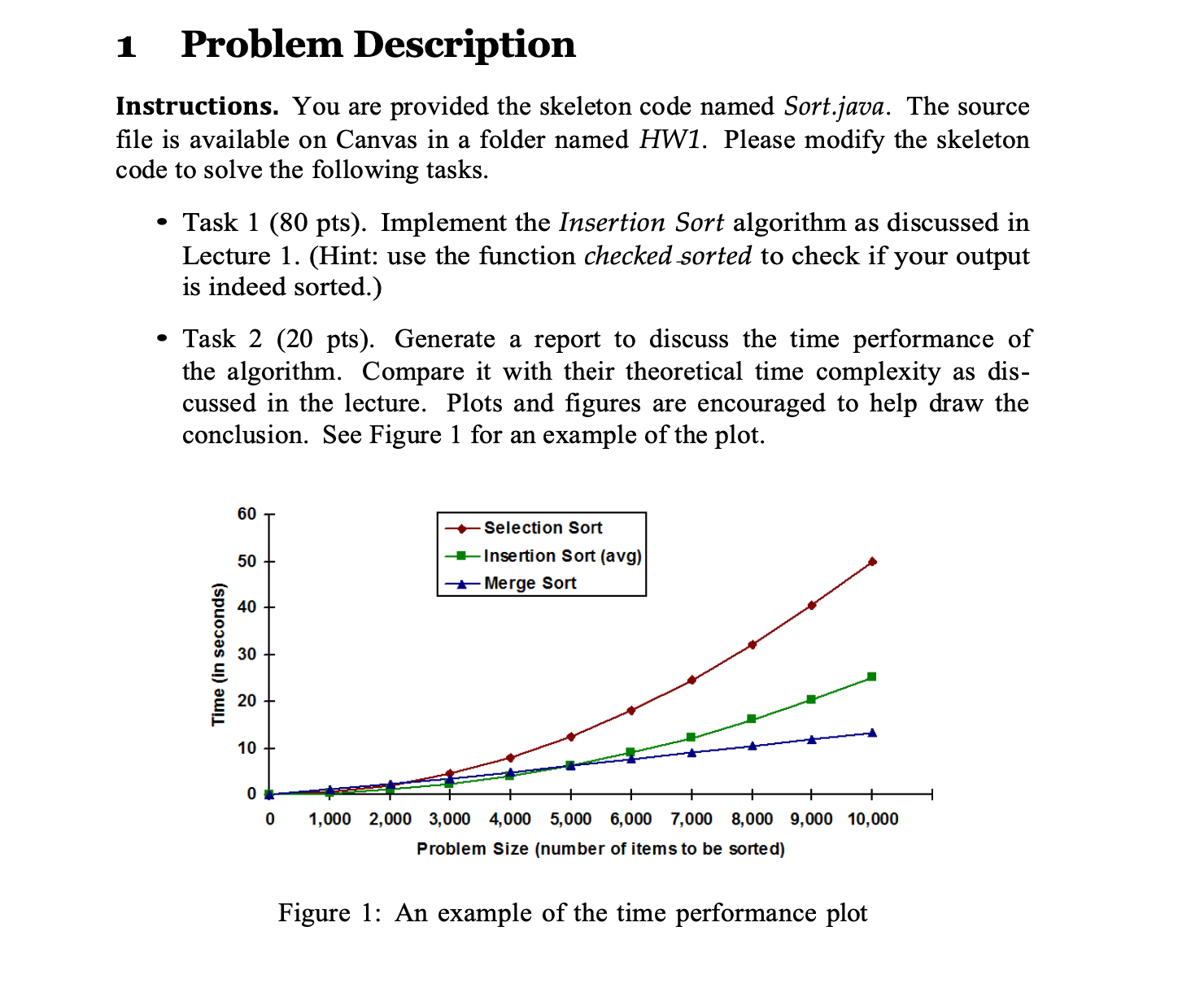Answered step by step
Verified Expert Solution
Question
1 Approved Answer
1 Problem Description Instructions. You are provided the skeleton code named Sort.java. The source file is available on Canvas in a folder named HW 1
Problem Description
Instructions. You are provided the skeleton code named Sort.java. The source file is available on Canvas in a folder named HW Please modify the skeleton code to solve the following tasks.
Task pts Implement the Insertion Sort algorithm as discussed in Lecture Hint: use the function checked sorted to check if your output is indeed sorted.
Task pts Generate a report to discuss the time performance of the algorithm. Compare it with their theoretical time complexity as discussed in the lecture. Plots and figures are encouraged to help draw the conclusion. See Figure for an example of the plot.
Figure : An example or tne time periormance piot
Code:
package sorting;
import java.util.;
public class Sort
public static int insertionsort int array
fill in your program
return array;
n: the size of the output array
k: the maximum value in the array
public static int generaterandomarray int n int k
List list;
int array;
Random rnd;
rnd new RandomSystemcurrentTimeMillis;
list new ArrayList ;
for int i ; i n; i
list.addnew IntegerrndnextIntk;
Collections.shufflelist rnd;
array new intn;
for int i ; i n; i
arrayi list.getiintValue;
return array;
n: the size of the output array
public static int generaterandomarray int n
List list;
int array;
list new ArrayList ;
for int i ; i n; i
list.addnew Integeri;
Collections.shufflelist new RandomSystemcurrentTimeMillis;
array new intn;
for int i ; i n; i
arrayi list.getiintValue;
return array;
Input: an integer array
Output: true if the array is acsendingly sorted, otherwise return false
public static boolean checksorted int array
for int i ; i array.length; i
if arrayi arrayi
return false;
return true;
public static void printarray int array
for int i ; i array.length; i
System.out.printarrayi;
System.out.println;
public static void mainString args
TODO Autogenerated method stub
System.out.printlnInsertion sort starts ;
for int n ; n ; nn
int array Sort.generaterandomarrayn;
long t System.currentTimeMillis;
array Sort.insertionsortarray;
long t System.currentTimeMillis;
long t t t;
boolean flag Sort.checksortedarray;
System.out.printlnn t flag;
System.out.printlnInsertion sort ends ;

Step by Step Solution
There are 3 Steps involved in it
Step: 1

Get Instant Access to Expert-Tailored Solutions
See step-by-step solutions with expert insights and AI powered tools for academic success
Step: 2

Step: 3

Ace Your Homework with AI
Get the answers you need in no time with our AI-driven, step-by-step assistance
Get Started


